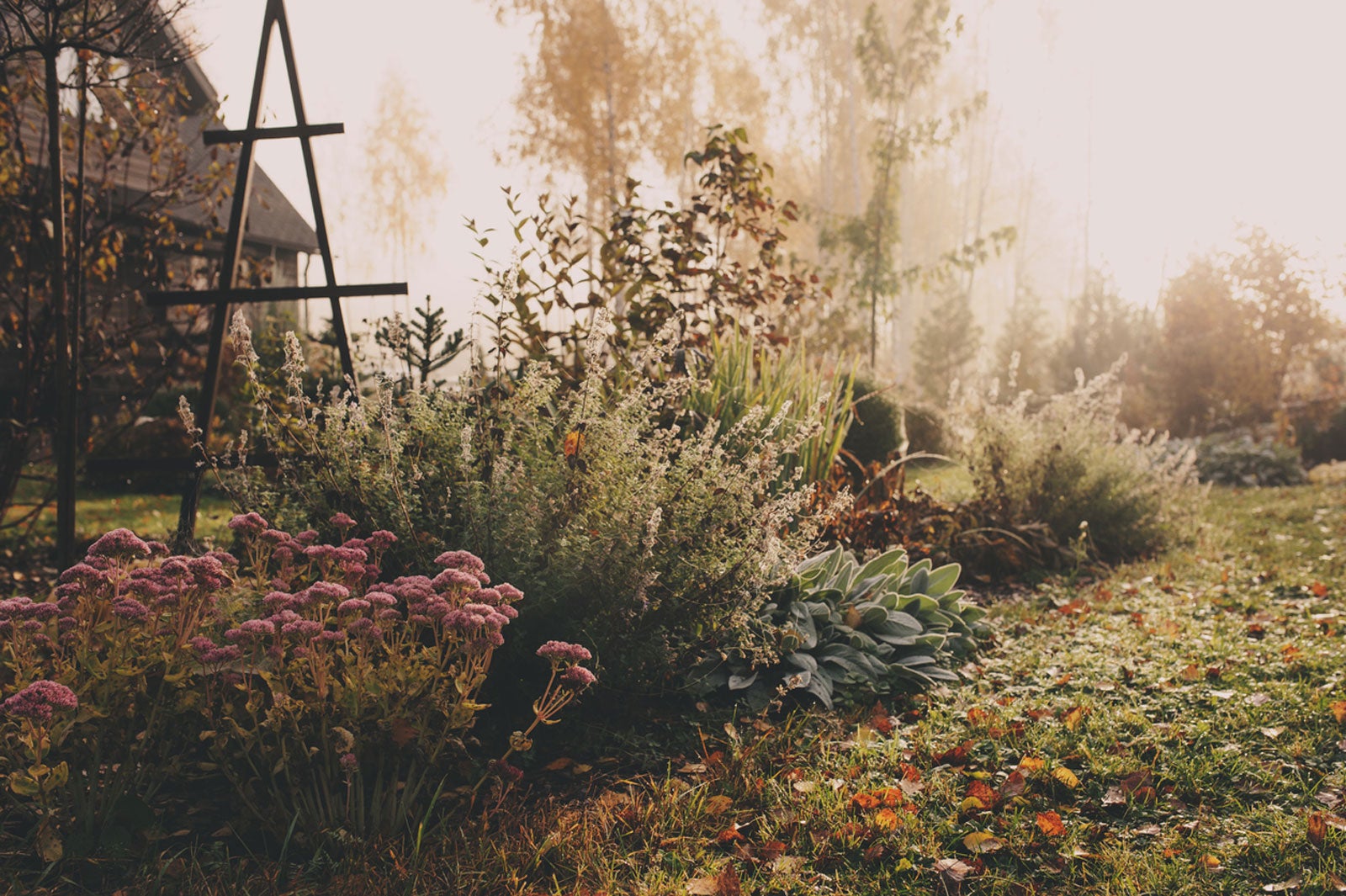Winter Cottage Gardens: How To Keep A Cottage Garden In Winter Appealing


The cottage garden is a classic, charming English landscape feature. Many of the traditional plants for such spaces are perennials and deciduous, which leaves winter cottage gardens looking bleak for part of the year. While it is easy to provide texture and color for the mildest seasons, it takes some planning to have an interesting cottage garden for winter, but it certainly can be achieved.
Cottage gardens are known for their carefree elegance. There is so much going on in these small spaces that the effect can be chaotic without some balancing influences. Spring and summer bulbs and flowers abound, while smaller fruiting bushes or trees and herbs lend a culinary aspect. Much of this dies back when cold temperatures arrive, however, leaving a cottage garden in winter a bit dull. A few suggestions can help perk up the winter garden.
Using Evergreens as Winter Cottage Garden Plants
To create a cottage garden with winter interest, you will need plants that do not lose their leaves. Smaller trees and shrubs are perfect winter cottage garden plants. Select trees that won't shade out other plants and have interest year-round.
Something that flowers and fruits is an option. Broadleaf or needle leaf plants will provide needed greenery. A plant that flowers in late winter, such as witch hazel, provides those adorable tasseled flowers. Other ideas include:
- Yew – Not only lovely foliage but yews also have cheery, red berries.
- Boxwood – Boxwood has many varieties and is easy to sheer, hedge, or use in containers.
- Camellia – Camellia has broad, glossy foliage with bright, late winter blooms.
- Ornamental grasses – Mondo, sedge, blue oat grass, and fescue are a few ornamental grasses to try.
- Sweetbox – Sweetbox has strongly scented winter flowers, black winter berries, and narrow, glossy foliage.
Other Plants for Winter Cottage Gardens
Another way to create a cottage garden with winter interest is by using plants that have brightly colored stems or persistent cones, berries, or fruit. Some of these to include in your garden are:
- Dwarf persimmon – A dwarf persimmon will have brightly colored fruit well into winter.
- Red twig dogwood – The bushes of red twig dogwood will provide a pop of color.
- Snowberries – Snowberries have creamy white berries dangling throughout the cold season.
- Chokeberry – Chokeberry has persistent, purple-black berries.
- Paperbark maple – The slightly shredded bark of the paperbark maple gives an amazing look to winter gardens.
- Japanese Kerria – Along with yellow spring blooms, Japanese kerria’s winter interest is in its bright green bark.
- Beautyberry – Beautyberry has bright purple fruits.
- Viburnum – The viburnum has black to red berries.
Flowering Plants for The Cottage Garden in Winter
Flowering plants often leave behind interesting seed heads to perk up the cottage garden for winter. One of the easiest to grow is Autumn Joy sedum, an impressive succulent with a high site tolerance and long-lasting flower heads.
Hellebores, with their forked large leaves, will produce copious nodding flowers in a host of colors.
Gardening tips, videos, info and more delivered right to your inbox!
Sign up for the Gardening Know How newsletter today and receive a free copy of our e-book "How to Grow Delicious Tomatoes".
Depending on your zone, you can also grow pansies, primrose, or honeywort. An evergreen clematis with scented winter blooms and arrow-shaped leaves make good additions. Pieris has cascading flowers in winter, while winter jasmine is hardy and produces golden flowers even in snow.

Bonnie Grant is a professional landscaper with a Certification in Urban Gardening. She has been gardening and writing for 15 years. A former professional chef, she has a passion for edible landscaping.
-
 Looking For Plants To Give You The Soft And Fuzzies? Try These 5 Fuzzy Leaf Plant Options
Looking For Plants To Give You The Soft And Fuzzies? Try These 5 Fuzzy Leaf Plant OptionsLovers of texture, drama, silver foliage and tactile plants will adore these special sensory garden additions. These fuzzy leaf plant options will leave you all aglow
By Susan Albert
-
 Get Ready For A Summer Of Hummers! Grow These Full Sun Hummingbird Plants and Flowers
Get Ready For A Summer Of Hummers! Grow These Full Sun Hummingbird Plants and FlowersIf you’re lucky enough to enjoy a sunny backyard, make sure you are maxing out on your pollinator opportunities and grow these full sun hummingbird plants and flowers
By Tonya Barnett